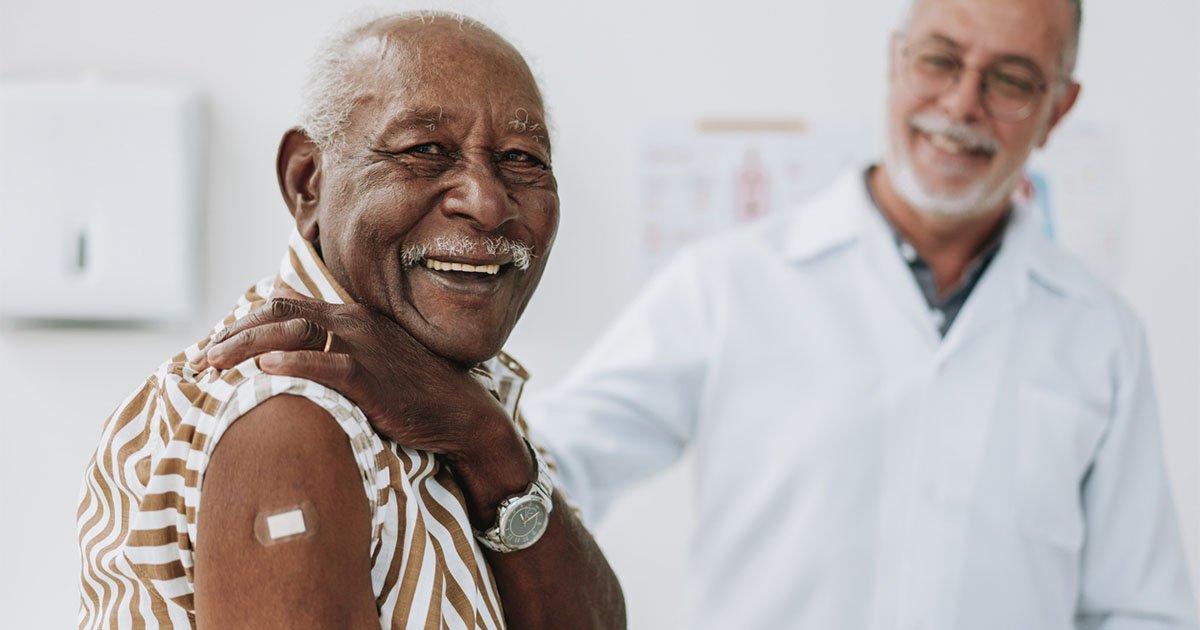Professor Rebecca Wurtz from the University of Minnesota School of Public Health shares her expertise on why the COVID-19 and flu vaccines are so important, and when the best time is to get vaccinated this year.
Q: What is different about the new COVID-19 vaccine, and who should get it?
Prof. Wurtz: The new vaccine uses the same technology as the old one — the only difference is it has been updated to be more protective against the variants of COVID-19 circulating now. It’s similar to the way the flu vaccine is updated each year to combat changing flu strains. Everyone six months and older should get the vaccine. So if you are reading this, you should get it.

Q: Is my last vaccine still working?
Prof. Wurtz: If your last vaccine was longer than six months ago, it is no longer working as well as it could be. That’s for two reasons: COVID-19 immunity wanes over time and the virus changes.
Q: I had COVID-19 this summer. Do I still need to get the vaccine this fall?
Prof. Wurtz: The CDC says you are protected for about three months after a bout of COVID-19. If you were sick at the beginning of summer, now’s the time to get the vaccine, but if you had it toward the end of summer, you can wait until November or early December for your next dose for best protection over the winter holidays.
Q: Can I get the vaccine if I’m immunocompromised?
Prof Wurtz: The answer is a resounding yes! COVID-19 is more dangerous if you are immunocompromised. It’s important to be well protected. Also, it is definitely okay to get both the COVID-19 shot and the flu shot at the same time. As of September 2024, there isn’t one shot for both. There is one in the works, but don’t wait for the combo shot – the time to get the COVID shot is now.
Q: When is the right time to get a flu shot?
Prof. Wurtz: Flu is a seasonal disease, typically occurring during the winter months. The best time to get the flu shot is early in the season — which “officially” starts this year on September 30, so early October is the best time. Why not get it earlier? The flu season often lasts into March and April. Much like the COVID-19 vaccine, the flu vaccine’s benefits wane after six months. If you get it too early, you won’t be protected in late spring. In some years, the annual flu epidemic is still going strong in April and even May, and it’s okay to get a second flu shot in the spring if you are at high risk of serious complications of the flu.
Rebecca Wurtz is an infectious disease physician, public health informaticist and professor in the U of M School of Public Health. Just like some people check sports scores, she checks the flu stats at the CDC’s version of ESPN, FluView.
-30-
About “Talking…with U of M”
“Talking…with U of M” is a resource whereby University of Minnesota faculty answer questions on current and other topics of general interest. Feel free to republish this content. If you would like to schedule an interview with the faculty member or have topics you’d like the University of Minnesota to explore for future “Talking…with U of M,” please contact University of Minnesota Public Relations at unews@umn.edu.
About the School of Public Health
The University of Minnesota School of Public Health improves the health and well-being of populations and communities around the world by bringing innovative research, learning, and concrete actions to today’s biggest health challenges. We prepare some of the most influential leaders in the field, and partner with health departments, communities, and policymakers to advance health equity for all. Learn more at sph.umn.edu.

